
16-01-2026 00:45
Ethan CrensonHi all, On decorticated hardwood from a New York

18-01-2026 12:24
Hello.An anamorph located on the surface of a thin

17-01-2026 19:35
Arnold BüschlenHallo, ich suche zu Cosmospora aurantiicola Lite

08-12-2025 17:37
 Lothar Krieglsteiner
Lothar Krieglsteiner
20.6.25, on branch of Abies infected and thickened

10-01-2026 20:00
Tom SchrierHi all,We found picnidia on Protoparmeliopsis mur

13-01-2026 07:28
 Danny Newman
Danny Newman
Chlorociboria glauca on indet. decorticate logThe

15-01-2026 15:55
 Lothar Krieglsteiner
Lothar Krieglsteiner
this one is especially interesting for me because
Hymenoscyphus on equisetum
Marja Pennanen,
23-08-2010 08:12
I found these the first time last year and now I've found them more.
They are about 1-2 mm high and wide.
Marja Pennanen,
23-08-2010 08:13
Marja Pennanen,
23-08-2010 08:16
Hans-Otto Baral,
23-08-2010 10:01

Re:Hymenoscyphus on equisetum
Hi Marja
I have only Stamnaria americana in my database with such a substrate and spore size. Crazy. Surely not scutula, spores are too wide and not heteropolar-asymmetrical enough. Could you perhaps look for the iodine reaction and shape of ascus base?
Even if on a herb stem I have no clear idea.
Zotto
I have only Stamnaria americana in my database with such a substrate and spore size. Crazy. Surely not scutula, spores are too wide and not heteropolar-asymmetrical enough. Could you perhaps look for the iodine reaction and shape of ascus base?
Even if on a herb stem I have no clear idea.
Zotto
Marja Pennanen,
23-08-2010 11:53
Marja Pennanen,
23-08-2010 12:00
Re:Hymenoscyphus on equisetum
The spores were now 23-30x5-8, this fruitbody wasn't so mature than the ealier.
Here's a photo of the paraphyses, they are actually 2-4 micrometers wide.
Hope you ment this with the ascus base (on the up-left corner).
Strange, but I had a hunch to keep some fruitbodies fresh ;)
Marja
Here's a photo of the paraphyses, they are actually 2-4 micrometers wide.
Hope you ment this with the ascus base (on the up-left corner).
Strange, but I had a hunch to keep some fruitbodies fresh ;)
Marja
Hans-Otto Baral,
23-08-2010 12:16

Re:Hymenoscyphus on equisetum
Splendid! Apical ring of Hymenoscyphus toye par excellence, base obviously without croziers, VB-guttules more clear. This is mainly important to recognize the species again. I fear there is nothing that fits in the literature, although I did not examine, e.g., Bernard's key.
Zotto
Zotto
Marja Pennanen,
23-08-2010 12:35
Re:Hymenoscyphus on equisetum
Hello,
splendid really :)
Do you mean that this is possibly an undecribed species?
How come, I've got a feeling, that this cann't be very rare and it's quite big and easy to notice, too...
Luckily I picked them more than just enough for determination :)
Our regional fungi society had an overnight meeting in Ilomantsi (near Russian border) last weekend...
Happy greetings: Marja
splendid really :)
Do you mean that this is possibly an undecribed species?
How come, I've got a feeling, that this cann't be very rare and it's quite big and easy to notice, too...
Luckily I picked them more than just enough for determination :)
Our regional fungi society had an overnight meeting in Ilomantsi (near Russian border) last weekend...
Happy greetings: Marja
Hans-Otto Baral,
23-08-2010 15:39

Re:Hymenoscyphus on equisetum
There are so many species described, and often so badly, that one can never surely say that something is undescribed. But keep looking for this and if it always has these big spores.
Zotto
Zotto
Martin Bemmann,
23-08-2010 20:35
Martin Bemmann,
23-08-2010 20:36
Martin Bemmann,
23-08-2010 20:40

Re:Hymenoscyphus on equisetum
Does it come close?
Cheers,
Martin
Cheers,
Martin
Hans-Otto Baral,
23-08-2010 23:07

Re:Hymenoscyphus on equisetum
Thanks Martin. Clearly H. scutula in my opinion. Thjs is the spore size and shape of scutula, even if cilia are absent. Marjas spores are hardly scutuloid and much broader.
Martin Bemmann,
23-08-2010 23:50

Re:Hymenoscyphus on equisetum
Thanks Zotto,
I consider my ridle as "preliminarily" solved. I remember some remarks on un-ciliated-spored H. scutula-like specimen in a key that I can`t find at the moment.
Cheers Martin
I consider my ridle as "preliminarily" solved. I remember some remarks on un-ciliated-spored H. scutula-like specimen in a key that I can`t find at the moment.
Cheers Martin
Marja Pennanen,
24-08-2010 07:48
Re:Hymenoscyphus on equisetum
Hello Zotto and Martin & others,
my suspicion waked when I had just studied a H. scutula specimen, where the spores were like those on Martin's photo. After that the spores of this finding seemed peculiar, broad and those many droplets made the spores look different-somehow scruffy. Asci were much bigger, too.
I've sometimes concidered, weather I put too many threads here. Then one friend said, that those can help others too. It's like collective learning. So I'm happy to see, that it can be at least partly true :)
Finaly it has been raining here, which definitely means more fungi :) Marja
my suspicion waked when I had just studied a H. scutula specimen, where the spores were like those on Martin's photo. After that the spores of this finding seemed peculiar, broad and those many droplets made the spores look different-somehow scruffy. Asci were much bigger, too.
I've sometimes concidered, weather I put too many threads here. Then one friend said, that those can help others too. It's like collective learning. So I'm happy to see, that it can be at least partly true :)
Finaly it has been raining here, which definitely means more fungi :) Marja
Erwin Gruber,
24-01-2011 14:27
Re:Hymenoscyphus on equisetum
Hello Marja,
some time ago i proofed an apothecium of "cf. Hymenoscyphus sp." on Equisetum from Finland, i found it in GZU - Univ. Graz. The Specimen is exhausted, got no more ascocarps, but i made a "description" which might be found again at Univ.
As i remember it got quite big spores, i could not determinate it with certainty, and it might be the same as your discussed specimen.
When i find my notations you will get detailed information at the page of your item.
Kind greetings
Erwin
some time ago i proofed an apothecium of "cf. Hymenoscyphus sp." on Equisetum from Finland, i found it in GZU - Univ. Graz. The Specimen is exhausted, got no more ascocarps, but i made a "description" which might be found again at Univ.
As i remember it got quite big spores, i could not determinate it with certainty, and it might be the same as your discussed specimen.
When i find my notations you will get detailed information at the page of your item.
Kind greetings
Erwin
Marja Pennanen,
24-01-2011 15:33
Re:Hymenoscyphus on equisetum
Hi Erwin,
thank you. Being a very green amateur I just don't study university specimen...
I think Equisetum is an interestigng substrate.
Just that if I find something there, it is usually pink Hymenoscyphus equisetinus or hairy Psilachnum inquilinum .
For instance Stamnaria is still on my list of wanted findings...
Marja
thank you. Being a very green amateur I just don't study university specimen...
I think Equisetum is an interestigng substrate.
Just that if I find something there, it is usually pink Hymenoscyphus equisetinus or hairy Psilachnum inquilinum .
For instance Stamnaria is still on my list of wanted findings...
Marja
Erwin Gruber,
24-01-2011 21:41
Re:Hymenoscyphus on equisetum
Hi Marja,
My time at univ. is over for some time, and i am sure to be at least as "greene" as you - honestly!
As i know is Finland a pefect place for some Stamnaria spp., you will find them this year, i will give some useful hints. One (not published) species, parasitic on Equisetum hyemale (Dutch rush) may be found in southern Finland as i know from exsiccata. You know that your country is full of lakes and rivers, and Horsetails love water!
Further hints to find Stamnaria spp. will follow later, you know i started a new item: Stamnaria plus Titaeospora.
Erwin
My time at univ. is over for some time, and i am sure to be at least as "greene" as you - honestly!
As i know is Finland a pefect place for some Stamnaria spp., you will find them this year, i will give some useful hints. One (not published) species, parasitic on Equisetum hyemale (Dutch rush) may be found in southern Finland as i know from exsiccata. You know that your country is full of lakes and rivers, and Horsetails love water!
Further hints to find Stamnaria spp. will follow later, you know i started a new item: Stamnaria plus Titaeospora.
Erwin
NC NC,
29-01-2011 00:32
Re:Hymenoscyphus on equisetum
Hi Marja,
i had luck to find all my material and annotations "from former times" again and have red the "Hymenoscyphus-description". Except one slight detail ( i might have not noted or it really differs) it matches your observations quite well. O.k. - this wont help anything in favour to a clear determination, yet it is another sample, possibly of the same species from northern Finland (Lappland) on Equisetum fluviatile. If you like i could tranlate the most important facts and post them here. According to my notations the spores had equal, rounded ends, so that upper and lower ends could not be distinguished outside of asci.
As i see the spores of your sample are slightly bipolar with one round and one little bit acute end.
Nice greetings
Erwin
i had luck to find all my material and annotations "from former times" again and have red the "Hymenoscyphus-description". Except one slight detail ( i might have not noted or it really differs) it matches your observations quite well. O.k. - this wont help anything in favour to a clear determination, yet it is another sample, possibly of the same species from northern Finland (Lappland) on Equisetum fluviatile. If you like i could tranlate the most important facts and post them here. According to my notations the spores had equal, rounded ends, so that upper and lower ends could not be distinguished outside of asci.
As i see the spores of your sample are slightly bipolar with one round and one little bit acute end.
Nice greetings
Erwin
Erwin Gruber,
09-02-2011 20:56
Re:Hymenoscyphus on equisetum
Hi Marja,
i found the old document about cf. Hymenoscyphus / Equisetum at floppy-discs.
Since the sample was exhausted, i did this extra-job of "describing" during working on Stamnarias.
As i saw, this find matches well with your specimens, with one slight, but possibly important exeption: your depicted spores look slightly inequilateral, with rounded and slightly acute endings.
I translated the more important part in English and added it to the German text, maybe someone got an idea what species it is, and whether it might be the same as yours.
Zotto might be interested as well - we will see.
Cheers
Erwin
i found the old document about cf. Hymenoscyphus / Equisetum at floppy-discs.
Since the sample was exhausted, i did this extra-job of "describing" during working on Stamnarias.
As i saw, this find matches well with your specimens, with one slight, but possibly important exeption: your depicted spores look slightly inequilateral, with rounded and slightly acute endings.
I translated the more important part in English and added it to the German text, maybe someone got an idea what species it is, and whether it might be the same as yours.
Zotto might be interested as well - we will see.
Cheers
Erwin
Hans-Otto Baral,
09-02-2011 21:04

Re:Hymenoscyphus on equisetum
Hi Erwin & Marja
it is very difficult to decide without illustrations about a fungus. But I feel this is surely not the same as Marja has. Her spores are clearly scutuloid (as you say, inequilateral, with different upper and loer end). Did you look for the croziers?
I wonder that you state the guttules in the spores were well visible in CB. You did not see this fresh under the micro?
No idea in fact.
Zotto
it is very difficult to decide without illustrations about a fungus. But I feel this is surely not the same as Marja has. Her spores are clearly scutuloid (as you say, inequilateral, with different upper and loer end). Did you look for the croziers?
I wonder that you state the guttules in the spores were well visible in CB. You did not see this fresh under the micro?
No idea in fact.
Zotto
Erwin Gruber,
09-02-2011 21:37
Re:Hymenoscyphus on equisetum
Hi Zotto,
some time has passed since i wrote the text, and it wasn't easy to make micro-photos then at the institution. I can't remember to have seen croziers after that time. It is likely that i didn't note them in the document while thinking that croziers were not important for determination at this time.
But most likely there should have been some, since it looks like a "typical" Hymenoscyphus to me.
- You are right - this is too much of speculation, therefore the exhausted sample might stay unidentified. The guttules were visible without, but (maybe) better in CB.
Liebe Grüße
Erwin
some time has passed since i wrote the text, and it wasn't easy to make micro-photos then at the institution. I can't remember to have seen croziers after that time. It is likely that i didn't note them in the document while thinking that croziers were not important for determination at this time.
But most likely there should have been some, since it looks like a "typical" Hymenoscyphus to me.
- You are right - this is too much of speculation, therefore the exhausted sample might stay unidentified. The guttules were visible without, but (maybe) better in CB.
Liebe Grüße
Erwin
Hans-Otto Baral,
09-02-2011 22:44

Re:Hymenoscyphus on equisetum
Hi Erwin
usually lipid bodies in spores get quite invisible in reagents such as CB or MLZ, therefore my surprize.
And many (most) typical Hymenoscyphus species (with mostly heteropolar spores) do not have croziers (those with croziers are interesting exceptions), only those around H. calyculus and Cudoniella mostly have.
Zotto
usually lipid bodies in spores get quite invisible in reagents such as CB or MLZ, therefore my surprize.
And many (most) typical Hymenoscyphus species (with mostly heteropolar spores) do not have croziers (those with croziers are interesting exceptions), only those around H. calyculus and Cudoniella mostly have.
Zotto
Erwin Gruber,
09-02-2011 23:24
Re:Hymenoscyphus on equisetum
Thank's for information Zotto, as i imagined, and quite likely red somewhere before, Hymenoscyphus is a kind of heterogenous "Sammelgattung". Will you separate it into monophyletic, good genera - maybe this may only be solved by geneticists or "Molekülkocher" as i heared someone to call those collegues.
Erwin
Erwin
Hans-Otto Baral,
09-02-2011 23:47

Re:Hymenoscyphus on equisetum
Du meinst die mit der Buchstabensuppe :-)
I think a split will come, and genetics will play a role, but I do not yet see clear how this will be. I don't like too many small genera, but I am always interested in the relations and groupings.
Croziers will surely not be a key character, instead excipulum and spore shape, and apo stipe length, and perhaps also apical ring type.
Zotto
I think a split will come, and genetics will play a role, but I do not yet see clear how this will be. I don't like too many small genera, but I am always interested in the relations and groupings.
Croziers will surely not be a key character, instead excipulum and spore shape, and apo stipe length, and perhaps also apical ring type.
Zotto
Marja Pennanen,
10-02-2011 09:58
Re:Hymenoscyphus on equisetum
Hi Erwin and Zotto,
thank you foryour interest and work with this finding :)
Time will tell weather I can find these more next season.
I'll try to keep these interesting fungi in my mind when wandering around ponds and lakes.
Marja
thank you foryour interest and work with this finding :)
Time will tell weather I can find these more next season.
I'll try to keep these interesting fungi in my mind when wandering around ponds and lakes.
Marja
Marja Pennanen,
20-03-2015 14:28
Re : Hymenoscyphus on equisetum
Hi,
finally I got determination for this from Estonia by Kadri, thanks to Zotto.
The species has been described by Raitviir 1984 and is at the moment Lanzia equiseti.
Marja
finally I got determination for this from Estonia by Kadri, thanks to Zotto.
The species has been described by Raitviir 1984 and is at the moment Lanzia equiseti.
Marja


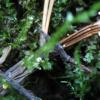
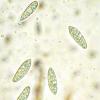
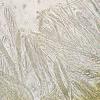
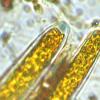
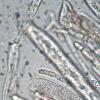
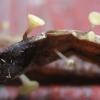
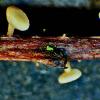
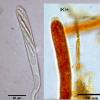
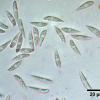
 14232.doc
14232.doc